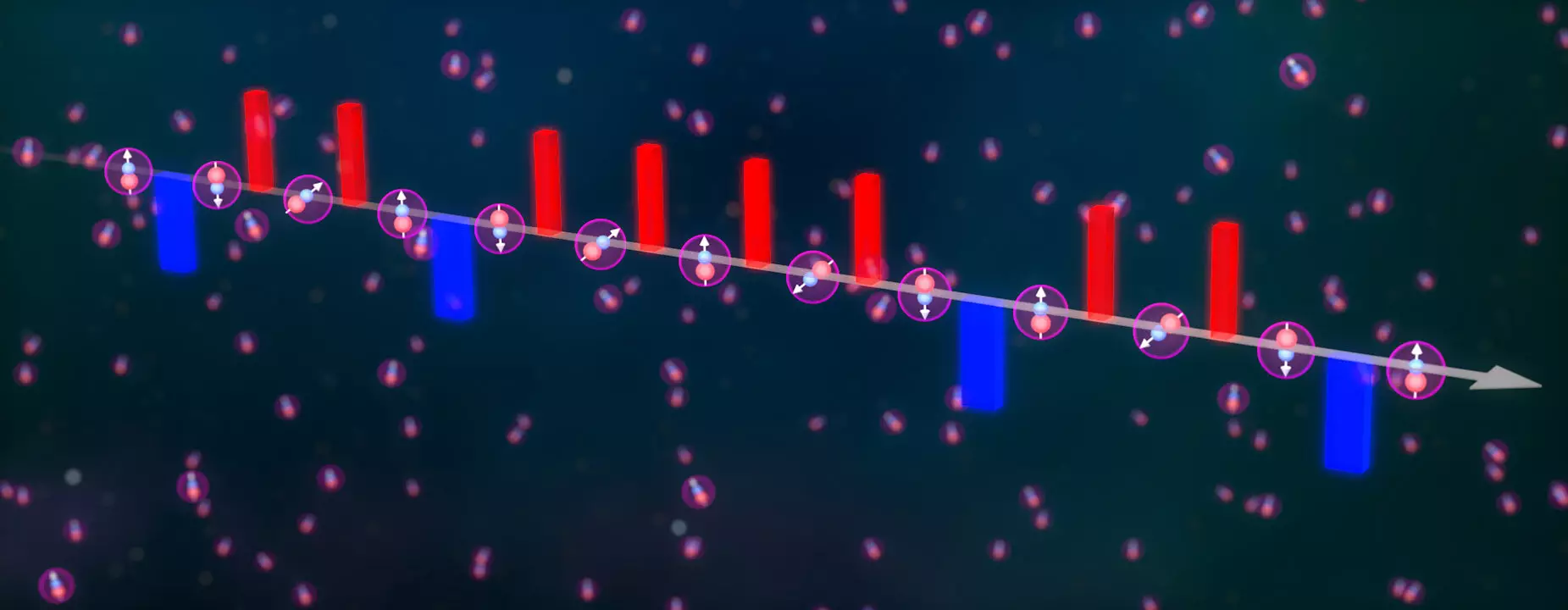The realm of quantum mechanics continually reveals astonishing phenomena, particularly within the study of spin dynamics. These interactions underpin various essential materials and technologies, such as superconductors and magnetic materials. However, replicating these intricate quantum interactions in controlled laboratory settings has posed significant challenges for physicists. Recently, a pioneering study by a team led by Jun Ye at JILA and NIST, in collaboration with Mikhail Lukin’s group at Harvard University, has introduced innovative methodologies that expand our understanding of complex quantum systems. Central to their findings is the utilization of Floquet engineering to manipulate interactions among ultracold potassium-rubidium molecules, offering a glimpse into the possible advancements in quantum computing and quantum sensing.
Floquet engineering is analogous to a “quantum strobe light,” allowing physicists to modulate interactions within a physical system through the application of periodic microwave pulses. This elegant technique enables researchers to generate discrete quantum effects, akin to the visual manipulation of motion in a film or animation. By meticulously adjusting the timing and intensity of these pulses, the study’s authors demonstrated an unprecedented capacity to control quantum interactions and enhance the detection of fundamental quantum phenomena. This breakthrough poses exciting implications for quantum simulation, particularly as it pertains to polar molecules, which are intrinsically sensitive to various physical effects due to their complex energy structures.
Annette Carroll, a graduate student involved in this research, expresses the transformative nature of their approach. By developing an advanced waveform generator, the team can now harness thousands of pulses, significantly increasing their experimental capabilities. This flexibility permits researchers not only to minimize noise in their quantum systems but also to finely tune the interactions governing the behaviors of ultracold molecules within their experiments.
In their experimental setup, the researchers encoded quantum information into the two lowest rotational states of potassium-rubidium molecules, essentially establishing their quantum “dance” before initiating their manipulation. Through the application of microwaves, the molecules became entangled, forming a quantum superposition of states, thereby allowing their interactions to be scheduled and manipulated. Notably, the team ventured into examining XXZ and XYZ spin models, which describe how spins interact within a solid-state system.
The visualization of spins can be likened to dancers adapting their movements according to the forces exerted by their partners. The pulses generated by Floquet engineering effectively transformed their “dance,” enabling the molecules to switch between states of attraction and repulsion. Such mechanical analogues simplify the complex interactions inherent in quantum physics, providing a clearer grasp of what’s occurring on a microscopic scale.
Two-Axis Twisting Dynamics: A Major Breakthrough
Among the remarkable observations made by the researchers was the realization of two-axis twisting dynamics. This concept involves subtly pushing and pulling the quantum spins along two perpendicular axes, resulting in highly correlated entangled states. These states pave the way for significant advancements in sensing technologies, enhancing precision and allowing more accurate measurements in experiments such as spectroscopy. Calder Miller, the study’s first author, recounts the excitement when they first identified the telltale signatures of two-axis twisting, a phenomenon first theorized in the 1990s but not previously observed until now.
The implications of two-axis twisting extend far beyond mere theoretical interest. The capacity to generate spin-squeezed states through this method reduces quantum uncertainty in one component of a spin system, thus amplifying sensitivity in its counterpart. This enhanced sensitivity is critical for many applications, including next-generation quantum sensors that could detect minute changes in environmental conditions or physical parameters.
Future Directions and Implications for Quantum Physics
As the researchers look to the future, their next challenge will be confirming the entangled states generated through their techniques—a necessary step for understanding the practical applications of their work further. The journey to unlock the intricate dynamics of quantum systems continues, with this study providing a solid foundation for subsequent explorations.
The collaboration between entities like JILA, NIST, and Harvard demonstrates the power of interdisciplinary cooperation in advancing scientific knowledge. This innovative work reaffirms the potential of Floquet engineering as a crucial tool for manipulating quantum interactions and the evolving puzzle of many-body systems in physics. As researchers pursue the nuances of quantum entanglement and its applications, the combination of sophisticated techniques and creative ideas is sure to yield even more groundbreaking discoveries.


Leave a Reply